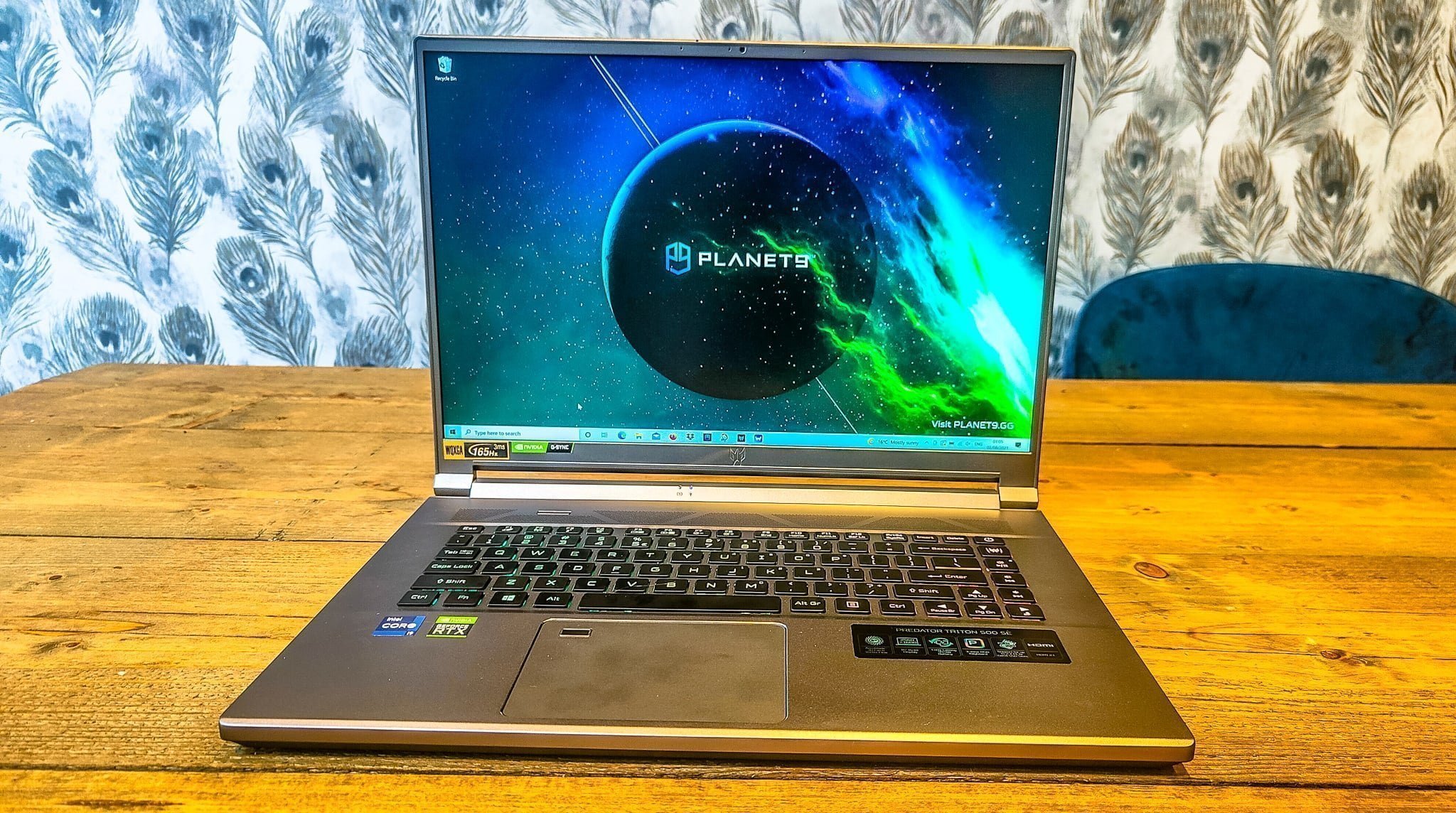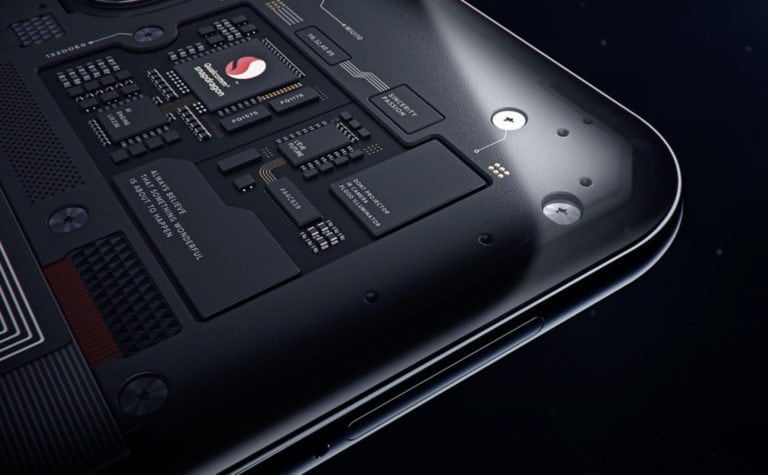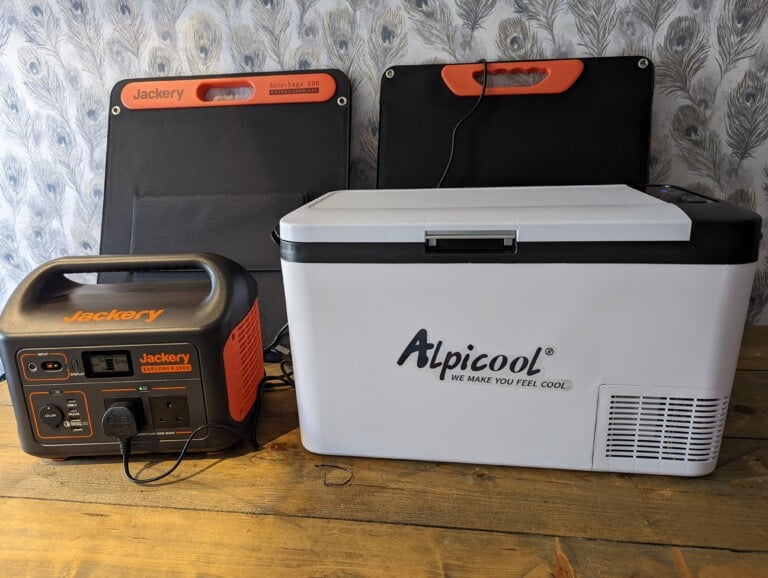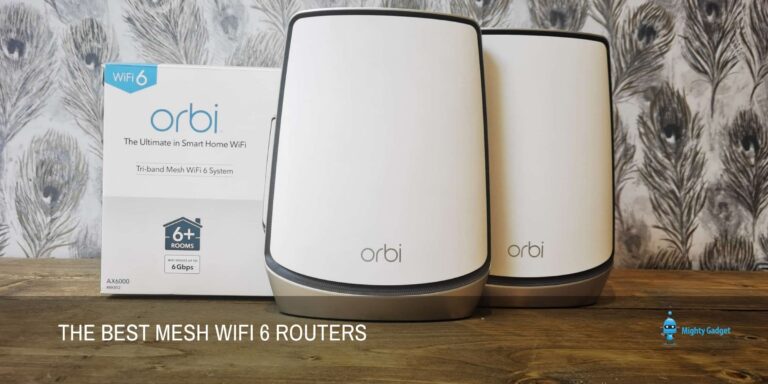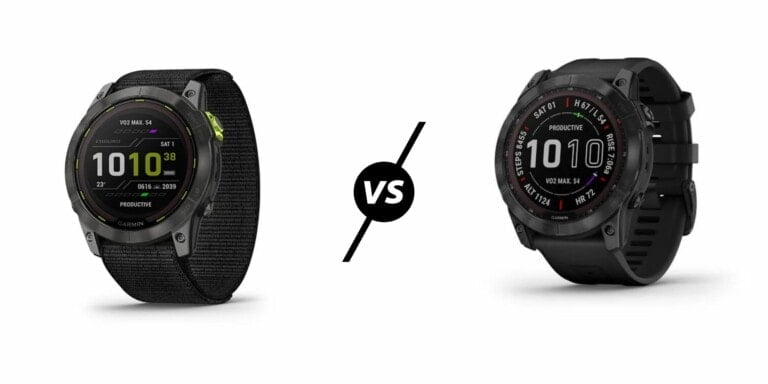Any links to online stores should be assumed to be affiliates. The company or PR agency provides all or most review samples. They have no control over my content, and I provide my honest opinion.
This year Acer has launched two special edition laptops with slightly different form factors than the generic 15.6″ and 17″ they typically use.
The Acer Predator Triton 300 SE was their first foray into the smaller format 14-inch gaming laptop niche, a category that doesn’t have much competition, and I loved it.
The Triton 500 SE goes the other direction, upping the display to 16-inches which I think is the only laptop on the market to use this size.
The model I have been sent is the maxed-out i9-11900H with RTX 3080, so it sits at the top of the range for Acer this year.
These two new special editions clean up the design offering something a little less in-your-face than some gaming laptops with a more subdued professional design.
Specification
- Display:
- 16-inch Mini LED panel
- 2560 x 1600 resolution (WQXGA)
- 1600 nits brightness maximum
- 240Hz refresh rate
- 16:10 aspect ratio
- CPU: Intel Core i9 11900H
- GPU: Nvidia GeForce RTX 3080 Max-Q
- Storage: 2TB Internal SSD (2X1 TB NVME SSDs)
- Ports: 2x USB-A 3.2 gen2, 2x USB-C with Thunderbolt 4, HDMI 2.1, SD card reader
- Connectivity: WiFi 6 (Killer AX1650i) with Bluetooth 5.2, Killer E3100G Gigabit Ethernet LAN
- Dimensions: 359 mm (w) x 262(d) x 19.9 mm (h)
- Battery: 99 Wh, 230 W power adapter
- Weigh: 2.5kg
- Price: Around £3k
Design & Display

While the Triton 300 SE adopted a smaller than normal size for Acer, the 500 SE uses an unusual 16-inch mini-LED display which has a 16:10 aspect ratio running at 2560 X 1600 with a 240Hz refresh rate.
Most laptops opt for a higher refresh rate 1920×1080 or a lower refresh rate but higher resolution 3840×2160. It is only the £3.5k MSI GS66 Stealth 15″ that has a similar display with 2560×1440 and 240Hz. As someone that reads/writes a lot on a laptop, I find the increased 1600px vertical resolution a little more preferable than 1440px, though, admittedly, not much difference.
Beyond the refresh rate and resolution, the display looks great. It is a matte display, so it doesn’t suffer too much from reflections. I don’t have a colourimeter on hand but colour accuracy appears to be good and the screen can get quite bright.
Acer hasn’t provided the exact dimensions of this model, but I believe it is 359 mm (w) x 262(d) x 19.9 mm (h) and 2.5kg, so a bit larger than the 15.6″ Triton 500 that launched last year.
Even though it is quite thin, it is reasonably large and on the heavier side. You can slot it into a laptop backpack easily enough, but you probably don’t want to be carrying it around all day.
You get plenty of ports. The two USB-C ports are also Thunderbolt 4, making this perfect for gamers and creators alike, allowing super-fast file transfers or daisy-chaining monitors and peripherals. The HDMI port is 2.1 allowing you to get 4K at 120Hz on external displays. On the flip side, it is a little disappointing that the Ethernet is only gigabit and that the WiFi is only 6, not 6E.
Keyboard & Trackpad
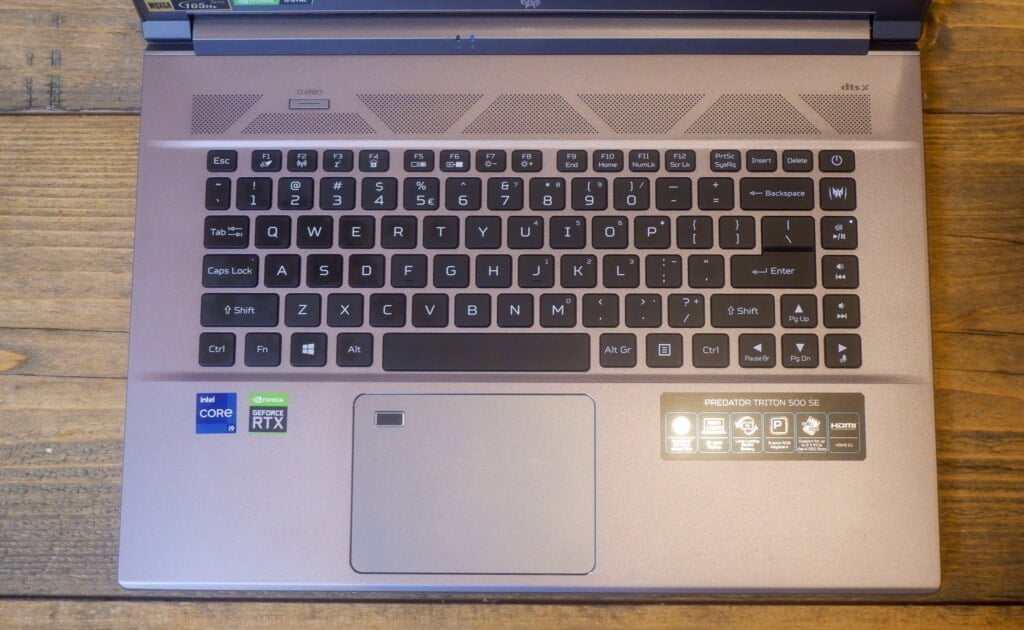
I generally don’t have any strong feelings towards laptop keyboards and trackpads, which applies here.
The keyboard is decent with well-spaced keys and a pleasant enough typing experience. The keys don’t go right to the edge of the keyboard so Acer don’t include a number pad (unlike the Gigabyte AORUS 15G). The RGB lighting is also more subtle than some of the other options from Acer or other brands. The RGB is in three zones rather than per-key lighting.
The trackpad is large and responsive enough with no issues to report. Similar to other Acer laptops, you get a small fingerprint scanner on the upper left of the trackpad, allowing you to log in a little quicker.
Performance – Acer Predator Triton 500 SE RTX 3080 vs Gigabyte AORUS 15G
| Acer Predator Triton 500 SE | Gigabyte AORUS 15G | |
| Time Spy | 10030 (Graphics: 10257 CPU: 8917) | 9532 (Graphics: 9597, CPU: 9184) |
| Time Spy Extreme | 4987 (Graphics: 5170, CPU: 4159) | 4433 (Graphics: 4693, CPU: 3376) |
| Port Royal | 6174 | N/A |
| Fire Strike Extreme | 11586 (Graphics: 12632, Physics: 24071) | 11782 (Graphics: 12354, Physics: 20640) |
| PCMark 10 | Total: 6407 Essentials: 10003 Productivity: 7551 Digital Content Creation: 9449 | Total: 6101 Essentials: 8981 Productivity: 7670 Digital Content Creation: 8949 |
| Far Cry 5 New Dawn | Running at 2560 x 1600 79fps avg 55fps min 97fps max Running at 1920 x 1200 93fps avg 64fps min 123fps max | Running at 1920×1080 95fps average 138fps max 67fps minimum |
| Final Fantasy XV Benchmark | 11245 | 8487 |
| Assasins Creed Valhalla | Running at 2560 x 1600 48fps avg 29fps min 112fps max Running at 1920 x 1200 67fps avg 31fps min 101fps max | Running at 1920×1080 64fps avg 26 min 103 max |
| CystalDisk | 11492MB/s Read 9134MB/s Write | 2580MB/s read 2842MB/s write |
I don’t review many high-end laptops, but this is the second RTX3080 model I have had this year. The Gigabyte AORUS 15G I previously reviewed is now discontinued and used an older lower spec Core i7-10870H plus a lower resolution display.
These laptops use an Nvidia GeForce RTX 3080 Max-Q GPU, so the overall performance is quite a bit lower than you find on a desktop, which makes sense, considering this is 19.9mm thick. Looking at the Time Spy and Time Spy Extreme results this offers about 33% less than my desktop Zotac RTX 3080.
The results show the Acer performs well and can easily play games at their highest setting using the native resolution. The overall performance was superior to the Gigabyte even when you look at just the GPU performance.
The CrystalDiskMark result is ridiculously high. This is because the laptop comes with two 1TB NVME drives in RAID 0, which effectively doubles the performances but also doubles the chance of data loss through drive failure. You should be backing things up regardless, so it shouldn’t be too much of an issue.
The overall specification of this model means this is around the best performance you will see on a laptop right now.
I am James, a UK-based tech enthusiast and the Editor and Owner of Mighty Gadget, which I’ve proudly run since 2007. Passionate about all things technology, my expertise spans from computers and networking to mobile, wearables, and smart home devices.
As a fitness fanatic who loves running and cycling, I also have a keen interest in fitness-related technology, and I take every opportunity to cover this niche on my blog. My diverse interests allow me to bring a unique perspective to tech blogging, merging lifestyle, fitness, and the latest tech trends.
In my academic pursuits, I earned a BSc in Information Systems Design from UCLAN, before advancing my learning with a Master’s Degree in Computing. This advanced study also included Cisco CCNA accreditation, further demonstrating my commitment to understanding and staying ahead of the technology curve.
I’m proud to share that Vuelio has consistently ranked Mighty Gadget as one of the top technology blogs in the UK. With my dedication to technology and drive to share my insights, I aim to continue providing my readers with engaging and informative content.

